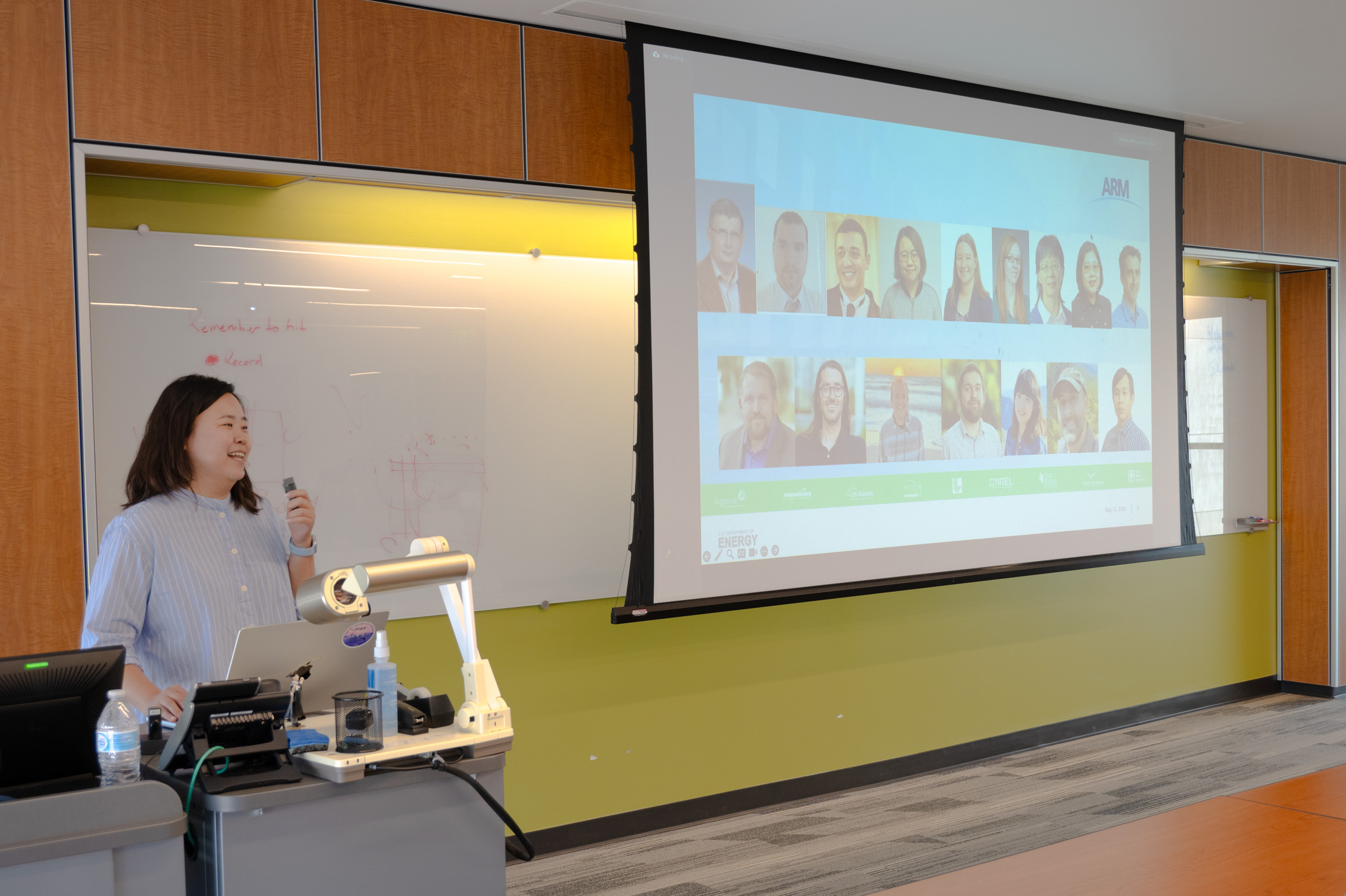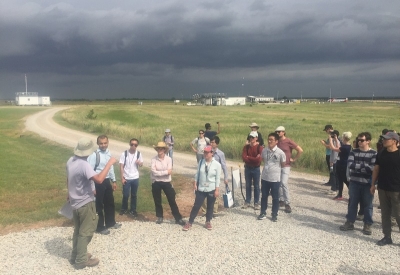ARM radar data mentor Ya-Chien Feng serves as 2024 ARM Open Science Summer School instructor

Ya-Chien Feng got her first taste of the Atmospheric Radiation Measurement (ARM) user facility in 2018, when she participated in an ARM Summer Training and Science Applications event in Oklahoma.
That experience wasn’t far from her mind in May 2024, when she stood in front of a class of 23 eager students during the ARM Open Science Summer School at Cleveland State University in Ohio. She was an instructor this time, tasked with teaching a group ranging from undergraduates to postdoctoral researchers about ARM radar data.
Feng has been an ARM radar data mentor for almost three years.
“It’s a privilege to use the radar network because ARM has radars at multiple frequencies to observe clouds, precipitation, and wind from the tropics to the poles, forests to cities, and across land and sea,” she says. “As a user facility, it’s very rich.”
Teaching at the summer school was a hard opportunity for Feng to pass up, especially having been an ARM summer student herself.
Student Life
Feng was a postdoctoral fellow at Colorado State University when she applied to participate in the 2018 summer training event. The event was geared toward graduate students and early career scientists interested in observations and modeling of aerosols and cloud and precipitation processes.

Colorado State associate professor Christine Chiu, a longtime ARM data user and field campaign participant, was among those who encouraged Feng to apply. She read the training description and was excited about several of the topics and instruments that would be covered.
“I thought it would be fun to learn a lot in such a short period,” says Feng.
The majority of the weeklong training program took place in July 2018 at the National Weather Center in Norman, Oklahoma. There were 24 students in all, including five besides Feng who went on to become ARM staff members: Sid Gupta, Cheng Tao, Jingjing Tian, Peng Wu, and Zeen Zhu.
The students broke into working groups to explore precipitation microphysics, ice and snow microphysics, high-latitude cloud systems, shallow cloud modeling, cloud fraction and liquid water content, and boundary-layer studies. Feng focused on ice and snow microphysics under the mentorship of ARM veterans Greg McFarquhar and Dmitri Moisseev.
Feng recalls trying to absorb as much information as she could during the week. The students worked from morning to evening, moving from classroom lectures to interactive lessons and group learning activities.
The trip included Feng’s first visit to ARM’s Southern Great Plains atmospheric observatory, where she got to see more than 50 observation platforms, including radars she now works with in ARM.
“I was very surprised in the moment that ARM is so resourceful, a lot of instruments and capabilities.”
“I was very surprised in the moment that ARM is so resourceful, a lot of instruments and capabilities,” she says.
Feng also enjoyed learning about the different locations where ARM operates, including its other two fixed-location observatories in Alaska and the Azores, which she still hopes to visit someday.
A Bridge to Teaching
About a year after the summer training event, Feng left Colorado State to take a postdoctoral researcher position at the National Center for Atmospheric Research in Colorado. In her new role, she began using data from ARM instruments such as radiosondes, lidars, radiometers, and radar wind profilers to study moisture variability over the Southern Great Plains observatory.
In October 2021, Feng joined Pacific Northwest National Laboratory in Washington state as ARM’s new radar data mentor. Her work focuses on processing and characterizing ARM radar data and developing ARM radar measurement strategies for operations.
When the opportunity to teach at the ARM summer school came along, Feng says, “I thought it would be fun to see the summer school as an instructor instead of a student.”
Feng is one of seven current ARM staff members who went through an ARM summer school or training event. Her experience proved to be beneficial while planning the 2024 summer school.
“Ya-Chien offered insight and feedback on how to improve or continue activities from previous ARM summer schools,” says ARM Workforce Development Coordinator Max Grover, an atmospheric data scientist at Argonne National Laboratory in Illinois.

Teaching and Learning
The summer school students spent the week in Ohio learning to use open-source tools to work with ARM data and high-resolution model output. The students split into four groups to work on projects tied to a specific ARM site or field campaign.
On the second morning of the summer school, Feng gave her radar lecture. Because the students came in with different levels of knowledge, Feng chose to cover a wide variety of topics during her lecture. She briefly described how radars work and what they measure before discussing ARM’s multifrequency radar network and related data products.
Feng’s lecture provided a foundation for all the students to start working with radar data. Joe O’Brien, an atmospheric science software specialist at Argonne, helped with the hands-on portion, showing the students how they could create their own code to analyze data.
“The students not only learned from the data but also learned how to use the data and to integrate all the information from ARM instrument data and coding in a very short time,” says Feng. “They are surprisingly efficient, and I think they are also very creative to put everything together.”
In September 2022, Feng was a radar instructor during an atmospheric instrumentation short course at PNNL for University of Washington graduate students. With that first-time teaching experience behind her, she found it easier to stay relaxed at the ARM summer school, even when students asked unexpected questions.
“The students, some of them are really spontaneous, and they ask questions about the data themselves and how to interpret something I didn’t see, so I’m very happy to learn from those because they have fresh eyes to see different things,” says Feng.
She also observed how patient some of the instructors were as they answered questions or taught students a new skill.
As they built up their knowledge bases, several of the students grew more confident by the time their groups presented their projects at the end of the week. This made Feng particularly proud.
“In the beginning, some of them are a little bit timid and scared and worry that they cannot learn very well,” says Feng. “But I think they are very brave to jump in, and maybe we cannot start as an expert, but in the end, they present things very well.”
After the summer school, the teaching continued for Feng: In September, she participated in another short course at PNNL, introducing more University of Washington students to ARM radar work.
# # #ARM is a DOE Office of Science user facility operated by nine DOE national laboratories.

